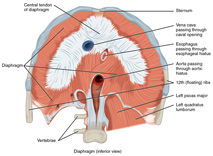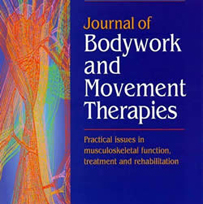Introduction by Chris Lavelle, Education Chair
“There is arguably no other muscle in the human body that is so central literally and figuratively to our physical, biochemical and emotional health as the diaphragm. From its most obvious role in respiration, to its less obvious roles in postural stability, spinal decompression, fluid dynamics, visceral health and emotional regulation, the diaphragm has a repertoire of function that is broad by any muscle’s standards.”
Did you know that the diaphragm has both a respiratory and postural (stabilising) function? Apart from its role in our basic survival, the diaphragm is an integral player in the stabilisation of the spine and extremities.
Starting in our development in the first 3 months of life, there is balanced co-activation between the diaphragm, pelvic floor, all sections of the abdominals PLUS the deep cervical flexors and deep spinal extensors. The diaphragm, pelvic floor and TVA regulate intra abdominal pressure, and provide anterior lumbo-pelvic postural stability. Kolar termed this balanced co-activation “the integrated stabilising system of the spine”.
In layman’s terms, it’s the core or powerhouse, and the diaphragm plays a crucial role! So….when clients hold their breath during an exercise, it is a sign that the stabilising function of the diaphragm is competing with its respiratory function, and that we need to improve the client’s underlying breathing/stabilisation strategy.
I hope you enjoy learning more from the selected editorial about the inspired design of the diaphragm and its importance in improving your clients movement and stability!
Chris Lavelle
PAA Education Officer, Vice President

The diaphragm – More than an inspired design
Article Outline
- Functional anatomy of the diaphragm
- Evo-devo
- Evolution
- Embryological development
- Neurology of the diaphragm
- Motor control of the trunk
- Pelvic floor dysfunction
- Motor control of the neck & upper limb
- Emotions & the diaphragm
- Contemporary emotional considerations
- Optimizing diaphragmatic & respiratory health
- Conclusion
- References
(Use the links above to jump to a section or the following link to read the complete article: https://www.bodyworkmovementtherapies.com/article/S1360-8592(17)30036-0/fulltext)
Excerpt:
There is arguably no other muscle in the human body that is so central literally and figuratively to our physical, biochemical and emotional health as the diaphragm. From its most obvious role in respiration, to its less obvious roles in postural stability, spinal decompression, fluid dynamics, visceral health and emotional regulation, the diaphragm has a repertoire of function that is broad by any muscle’s standards.
In this editorial, the two accompanying papers by Montes et al. (2017) and by McCoss et al. (2017) provide new insights into the diaphragm’s interconnected role with trunk stability and, via asomato-somatic reflex, the effects of the diaphragm release onnociception in the neck, respectively.
The diaphragm has long been considered a key part of the trunk’s stability mechanism by Strength & Conditioning Coaches (Chek, 1994) and Rehabilitation specialists (Lee, 1998) alike; it is considered frequently underactive by specialists in breathing rehabilitation (Chaitow, 2014); it is found to be a key muscle in those therapists working with somato-emotional release (Manheim and Lavett, 1989); and is considered a metaphorical and literal transitional point between the reptilian functions of the body and the mammalian limbic-emotional functions of the body. Osteopaths have long considered the respiratory diaphragm part of a multi-diaphragm system for regulating pressure within body compartments (starting with cranial dura, then sequentially the suboccipital group; the supra-hyoid group, muscles of the nasopharynx, glottis and sphenoid-ethmoid palate; the pleural dome and cervicothoracic fascia (Paoletti, 2015); the diaphragm proper; and the pelvic floor (Keleman, 1989)).

Full Members: JBMT Subscription
Have you signed up for your free subscription to the Journal of Bodywork and Movement Therapy yet?
Full members with an active PAA membership have a subscription to the JBMT included with membership (lists are updated quarterly).
Follow this link for instructions on how to access your complimentary subscription to the Journal: JBMT registration instructions

Comments are closed.